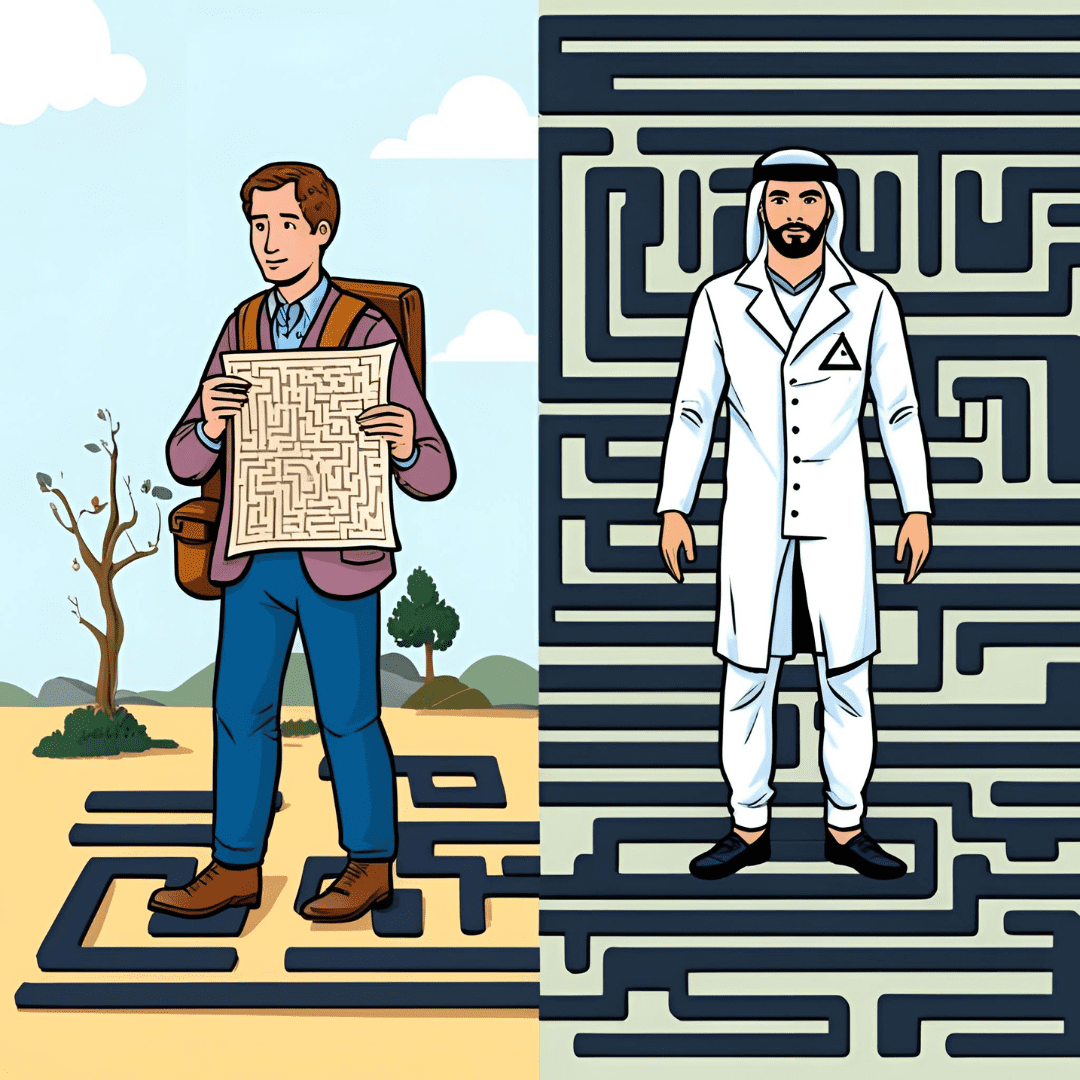Since the early days of artificial intelligence (AI), the human brain has been one of the main sources of inspiration for developing intelligent technologies. The fundamental idea behind AI is to create machines capable of learning, solving problems, and making decisions, much like the way the human brain operates. However, even though artificial neural networks have made remarkable progress over the years, they still remain far from replicating the complexity, flexibility, and efficiency of the real brain.
How Artificial Neural Networks Work and Why They Are Inspired by the Human Brain
Artificial neural networks are computational models designed to simulate the way human neurons connect and transmit information. These models are organized in layers, with each node in the network acting as an “artificial neuron” that processes information and learns patterns from large data sets. Thanks to sophisticated algorithms, these systems are capable of tasks such as face recognition, predicting trends, generating text, and even diagnosing diseases.
Despite this progress, it’s important to note that artificial networks still rely on large amounts of data and require extensive training. In contrast, the human brain processes information more efficiently and can adapt to new situations with much less information. Furthermore, the brain’s ability to generalize and learn with only a few examples is still something artificial networks struggle with.
Key Differences Between the Human Brain and Current AI Models
While artificial neural networks are modeled after the brain, they are still quite different. The human brain contains approximately 86 billion neurons, connected by trillions of synapses, and it processes information in parallel. This complex web of connections allows humans to make decisions, understand emotions, and adapt to novel situations quickly and intuitively.
On the other hand, current AI models require vast amounts of data to perform tasks accurately. They often fail in situations where they have not been explicitly trained, making them less versatile than the human brain. The real brain also has the remarkable ability to reorganize itself (a process known as neuroplasticity), a feature that AI has not yet achieved.
How Neuroscience Influences the Development of AI
Neuroscience plays a crucial role in AI development. By studying how the human brain learns, remembers, and reacts to stimuli, researchers have been able to create more sophisticated algorithms. These algorithms are designed to replicate certain brain functions, such as learning from experience, recognizing patterns, and even understanding complex contexts.
Additionally, AI has also supported neuroscience research. Artificial neural networks allow scientists to simulate brain activity, test hypotheses, and gain new insights into how the brain works. The exchange between these two fields has accelerated the development of both AI and neuroscience.
Deep Learning: The Next Step Toward Simulating Human Perception
One of the most promising advancements in AI is the development of deep neural networks, or deep learning. These networks consist of several layers that allow AI to learn more abstract and complex representations of data. Deep learning systems have achieved impressive results in image and speech recognition, natural language processing, and even creative tasks like generating artwork or composing music.
However, even though deep learning networks were inspired by the hierarchical processing of information in the human brain’s visual cortex, they are still far from replicating the brain’s ability to understand context, emotions, and intentions. The human brain can process information in ways that machines simply cannot, even with vast amounts of data.
Neuroplasticity: Why AI Struggles with Adaptation
One of the brain’s most remarkable features is neuroplasticity — its ability to reorganize itself by forming new neural connections. This is a key difference between the human brain and artificial neural networks. While the brain can quickly adapt to new information or changes in its environment, AI systems often require reprogramming or retraining to handle new tasks. The flexibility of the human brain, therefore, remains a significant challenge for AI researchers.
Although deep learning systems have made strides, they still lack the brain’s incredible adaptability and efficiency when it comes to learning from minimal examples or adjusting to completely new situations.
Practical Applications of AI: How Neural Networks Shape Our Daily Lives
Despite these challenges, AI is already integrated into many aspects of daily life. Virtual assistants like Siri and Alexa, automatic language translators, personalized movie recommendations, and medical diagnoses based on images all rely on artificial neural networks. These applications show that, while AI may not yet match the brain’s full capabilities, it is still capable of transforming industries and improving our daily lives.
Furthermore, AI has started to expand into more creative fields. For instance, AI systems like DALL·E can generate images from text descriptions, and AIVA (Artificial Intelligence Virtual Artist) creates music compositions. While these AI-generated works are impressive, they still lack the emotional depth and contextual understanding that a human artist can bring to their creations.
The Future of AI: Moving Toward Neuromorphic Networks
Looking ahead, the future of AI may lie in the development of neuromorphic networks. These networks aim to replicate not only the structure of neurons but also their electrochemical behavior. Neuromorphic systems promise to be more energy-efficient and adaptable, much like the human brain. Researchers hope that these networks will lead to AI that can learn in real-time, adjust to changing environments, and perform tasks more effectively.
Additionally, neuromorphic systems could address some of the challenges associated with traditional deep learning models, which require massive amounts of energy and data.
Why the Human Brain Remains the Ultimate Benchmark for Intelligence
While AI has made incredible progress, the human brain remains the most sophisticated and adaptable intelligence system known to mankind. Even though AI systems are getting closer to simulating certain aspects of the brain, the overall complexity of human cognition, emotion, and creativity remains unmatched. The brain continues to serve as the ultimate reference point for developing truly intelligent machines.









